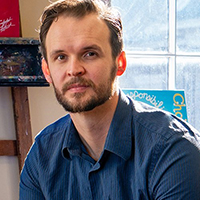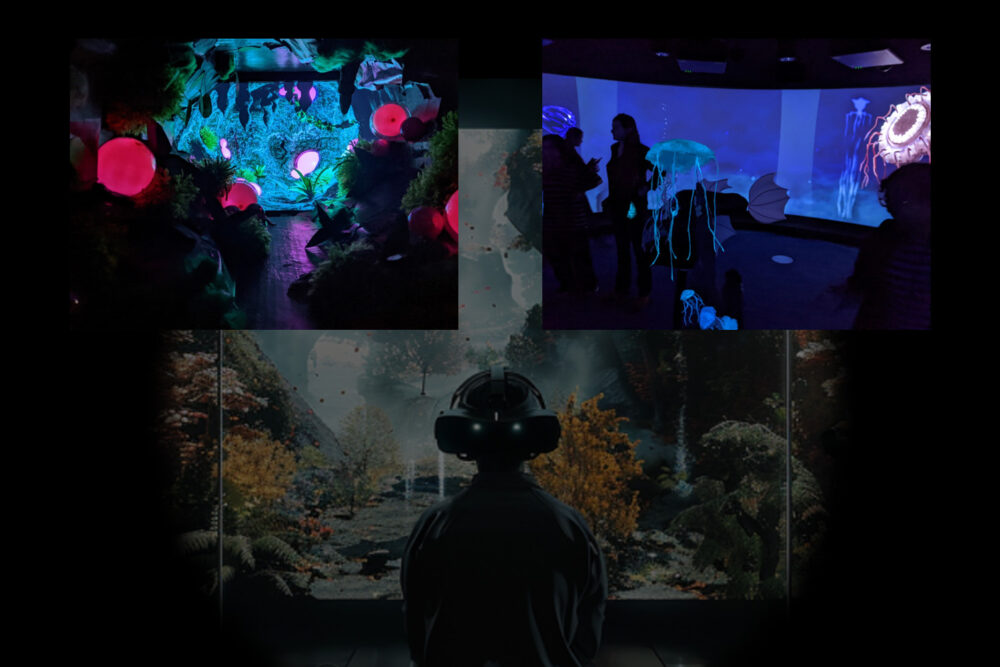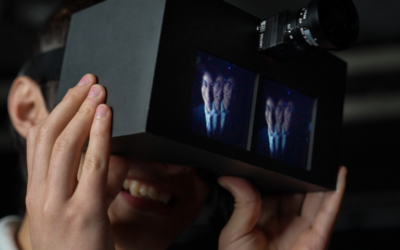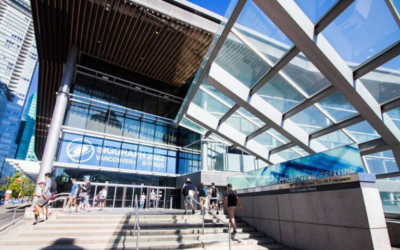Image Credit: Justin J. Johnson
SIGGRAPH connected with Justin Johnson to discuss his SIGGRAPH 2024 Educator’s Forum contribution, “Exploring the Dichotomy of Nature and Tech Through an Interactive Media Assignment”. Justin challenges students to explore the intersection of nature and technology through interactive art. By blending animation, 3D modeling, and hands-on creation, students deepen their connection to nature while sharpening their media-making skills. Read on to hear how this project is connecting technology and nature in the classroom.
SIGGRAPH: How does the use of interactive art in this assignment help students explore the relationship between nature and technology?
Justin Johnson (JJ): Nature and technology are often thought of as dichotomous ideas, but there is a lot of interest in combining them, particularly in situations when people may not have immediate access like healthcare or corrections. With growing access to immersive platforms and development tools, there is a lot more to explore in this area.
So, the intention behind this project is to encourage students to explore creating nature-inspired experiences using emergent technology. To start I give students a short reading list that covers some prevailing theories on how nature can be restorative as well as examples of using immersive nature experiences in practical settings. I think that background knowledge gives them a starting point from which they can explore more deeply through the design and creation of their own experiences.
SIGGRAPH: What kinds of creative challenges do students face when combining animation, 3D modeling, and physical making? How do you encourage them to overcome these challenges?
JJ: Many of the challenges came from figuring out how to integrate the digital and physical components of their project together. Many of the students were familiar with creating physical pieces or entirely digital pieces but struggled to combine them in a holistic way. To overcome, I encouraged them to think about how they could use physical mediums to produce sources assets. One easy way, for example, is to take photos of leaves then turn those into textures for 3D models. But they could also take it a step further and create their own leaves through papercraft or painting and take images of those.
I also showed them other ways to combine the physical and digital, such as capturing physical 3D forms through photogrammetry. I also encouraged them to explore other senses such as auditory and tactile and how might physical media address those to supplement a visual digital experience.
SIGGRAPH: In what ways does the assignment encourage students to strengthen their connection to nature? How does this connection to nature impact their work and skill in media making?
JJ: I believe most people have an innate connection to nature and almost everyone has something about nature they love, whether it’s hiking, gardening, being near water, taking care of animals, etc. This assignment lets students engage with aspects of nature they love and create interactive art about it. I think engaging with something through art and design is a powerful way to strength an understanding and connection to it. It also allows them to make something other people can experience and share together.
As for impacting their media-making skills, the emphasis on incorporating technology and immersive media challenges their skills not only in trying to combine two seemingly dichotomous ideas, but also simulating certain aspects of nature can be difficult. A lot of those challenges require creative problem solving and finding new ways to make media.
SIGGRAPH: How can the flexibility of this assignment be adapted to suit different subjects, such as animation or game development?
JJ: I think the end result could be adapted to suit different needs. For example, some of the projects focused more on audio and visual experiences, leaning more on animation to create their digital components with perhaps some but less interactivity. Those projects ranged from using 2D animation, 3D animation, and motion graphics. They also often had some physical elements to project on to or in some cases touch.
Other the other hand, other projects utilized game engines to produce their final piece. One project even created an entire digital forest in a virtual VR environment that could be explored and interacted with.
SIGGRAPH: What impact can this have on students’ learning?
JJ: Students can experiment with using animation and or games in new, interesting ways. They can experiment with new ways to make media and assets. They can also gain confidence through implementing a creative solution to combining physical and digital media. Some of the workflows and technology they used were challenging, which taught them new skills, software, and tools. It also allows them to experiment and be creative with emergent digital media making tools.
Inspire the next generation with your unique approach to education. Submit to the SIGGRAPH 2025 Educator’s Forum by 18 February!

Justin Johnson is Assistant Professor in the of Media Arts, Design and Technology at North Carolina State University, where he brings over a decade of experience in game design, digital art, and education. He holds a Doctor of Design from North Carolina State University with research focused on the health benefits of nature-inspired virtual environments in games. Justin has extensive background in both academia and the gaming industry having worked at the AAA and self-published indie game level as well as several academic institutions. His academic work has been featured in publications and conferences from a variety of fields including those related to game design, landscape architecture, and immersive media.



